In this article on telecommunications power, we will look at the operation of other backup equipment.
Understanding by backup, the action of ensuring the continuity of telecommunications operations even in case of failure of the commercial network.
So we will talk about UPS and inverters which provide AC power autonomy, when AC power fails.
You should know that this equipment is only used in high priority strategic systems.
Some of them are military telecommunications, for billing, large financial centers.
In order for you to take better advantage of this information that we will give here, we suggest you to read our previous articles which are:
– Electrical power in telecommunications
– Power equipment for telecommunications. Part 1
– Power equipment for telecommunications. Part 2
Here is what this equipment consists of and how it operates.
UPS
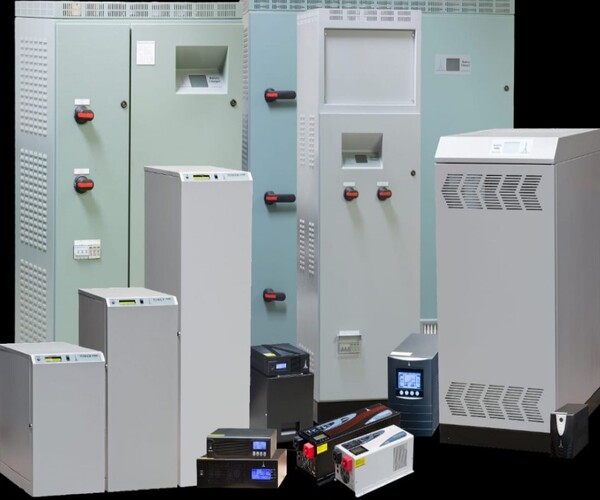
This equipment has batteries and at the moment of a failure in the AC electricity, it supports the system transforming the DC energy of these batteries into AC current.
Therefore, the system backs up loads that work with AC electricity. It is noteworthy that the change occurs instantaneously at the time of failure. So the equipment never shuts down, so service is never interrupted.
Generally, this equipment has an autonomy of a few minutes to allow time for the genset to take over the load.
However, depending on the level of security required, it can be sized to provide a backup of several hours. Obviously, this parameter depends on the available budget. For telecommunications, UPS with large capacities greater than 10 kVA are used.
On the other hand, there are 3 technologies for these equipments, of which the most modern is the most expensive but also gives better performance.
In this sense, here we will only talk about the «true on line» technology that offers a sinusoidal AC signal of greater purity, without distortions and works as a filter.
With the latter we mean that it eliminates problems of the AC power supply network, such as surges or others that could affect the loads.
We must clarify that this is the best technology, technically speaking, but also the most expensive.
Below we show the operation scheme under normal operating conditions.

The red lines indicate the direction of the AC and DC power. Additionally, the batteries are being recharged, if necessary.
UPS true on line
Below, you can see how the true on online UPS works to supply AC power, as a backup, to loads when there is an AC power failure.
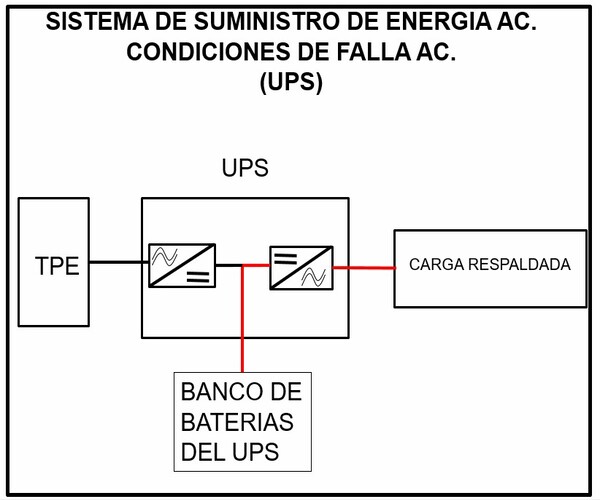
We clarify that the UPS batteries are not the same of the telecommunications power system that are connected to the rectifiers.
In the post The UPS in the telecommunications power system you can learn other details of this equipment, so be sure to read it!
DC – AC Inverter
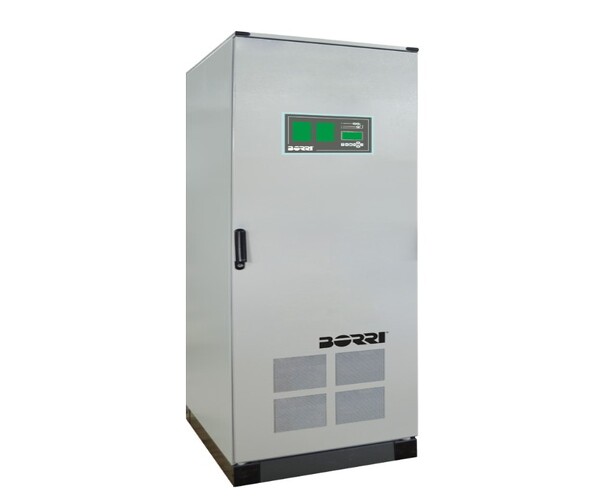
The DC/AC inverter does the opposite of rectifiers, so it backs up loads that operate on AC electricity.
It is installed as an additional load in the power panel or rectifier system, so that the latter supplies the DC power that it will transform.
In the following image we show its connection within the power system for telecommunications.
This with normal operation. The red lines indicate the AC – DC power flow.
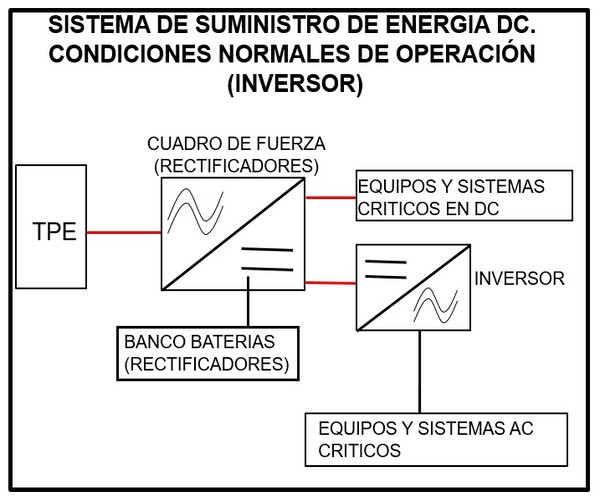
As you can see, this equipment is connected to the batteries of the telecom power system and recharges them, if necessary.
The more expensive inverters include an additional component called «battery charge controller».
So that the AC loads connected to it, have the autonomy provided by the batteries in the situation of AC power failure.
The diagram below shows how it works in emergency mode.
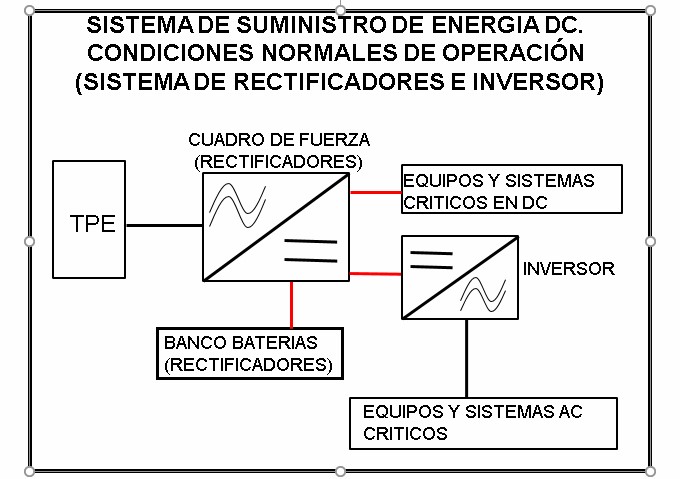
As you can see, the inverter and UPS are equipment, which greatly raise the level of operational safety.
This is in reference to the telecommunication power system equipment, which operates on AC electricity.
For additional information
If you want to know more details of this equipment, you should read our article The inverter in the telecommunications power system.
In our Course of design of dc power systems for telecommunications, you will learn all about its selection. You’ll find the theme of this learning in the content.
It will be very useful when designing a power system for telecommunications, which is robust and meets all the criteria and standards.
If you liked this article, or if you have any questions, let us know in the comments. We also invite you to visit our website energydcac to know our interesting content and news.
Image source
- upscomunicaciones.com
- energydcac.com
- gadgets360.com

